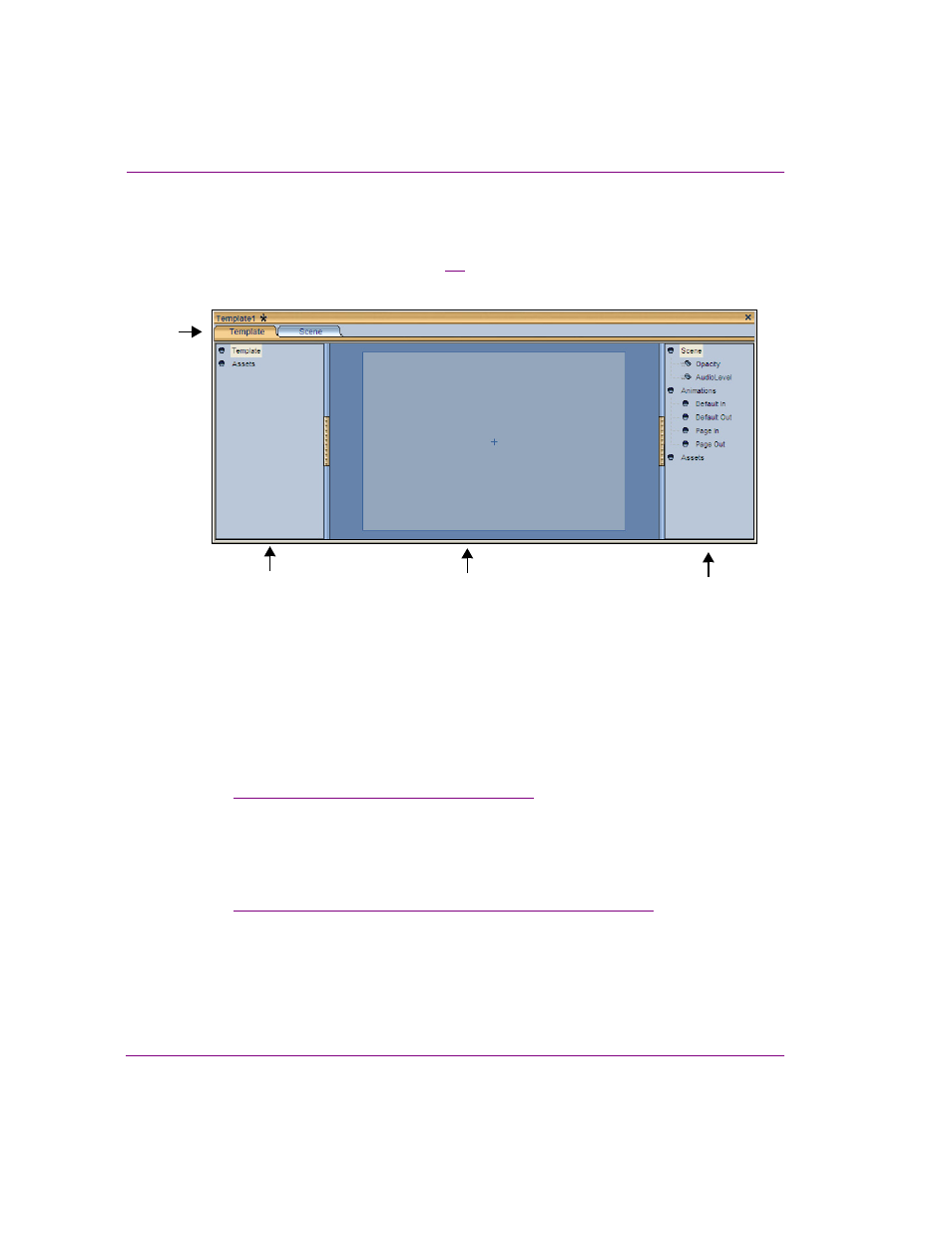Project windows - control and scene sides, Project windows - control and scene sides -28 – Grass Valley Xstudio Vertigo Suite v.4.10 User Manual
Page 63

3-28
Xstudio User Manual
Orientation to Xstudio’s desktop
Project Windows - Control and scene sides
In Design mode, Xstudio projects (Templates, Control Panel and Scenes) are created
and/or edited in the Project window. Figure
demonstrates that there are four (4) main
parts to the Projects window:
Figure 3-8. Xstudio’s Project window components
•
Tabs: For projects that have a control and scene side, the Project window will feature
two tabs (Template/Panel) and Scene, which allow you to switch between the control-
side’s canvas to the scene-side canvas.
•
Object Tree: The Object Tree is located within the collapsible panel on the left-side of
the Project window. Using two main categories, T
EMPLATE
or P
ANEL
and A
SSETS
, the
Object Tree displays the objects and assets that have been added to the control-side’s
canvas. Clicking on an object in the tree selects it on the canvas.
See
“Assigning an action to an object” on page 10-12
for related information.
•
Scene Tree: The Scene Tree is located within the collapsible panel on the right-side of
the Project window. Using three main categories, S
CENE
, A
NIMATIONS
and A
SSETS
, the
Scene Tree lists the objects and assets that are currently located on the canvas. Items
from the Scene Tree can be dragged and dropped to create connections with control
panel or template objects.
See
“Displaying the animated properties in the Scene tree” on page 7-23
for related
information.
•
Canvas: The canvas is the work area onto which you drag-and-drop assets, primitives
and/or Xmedia objects, and then manipulate them (e.g. aligned, layered, grouped) to
create functional and attractive graphics displays and control panels.
Canvas
Scene Tree
Object Tree
Tabs
